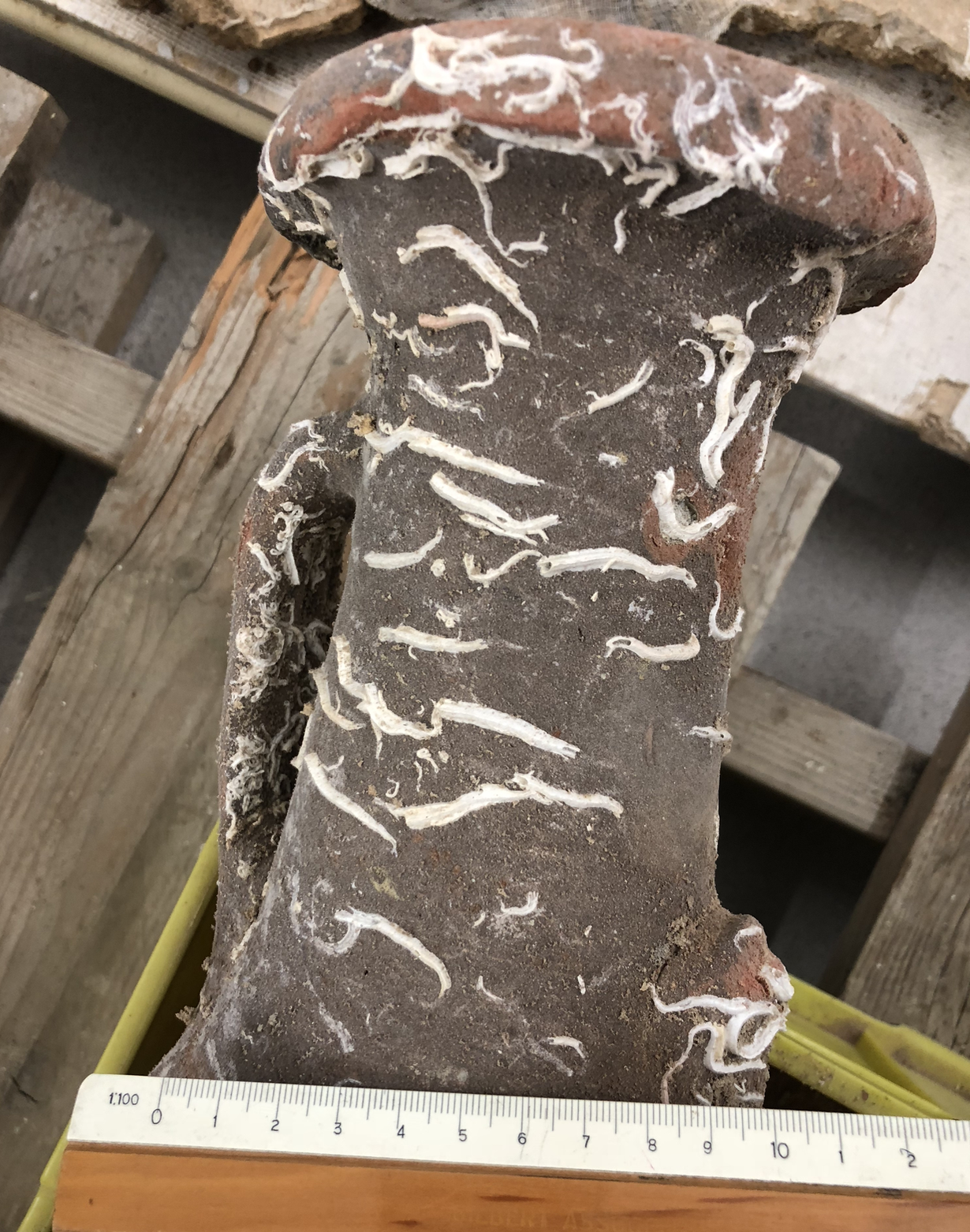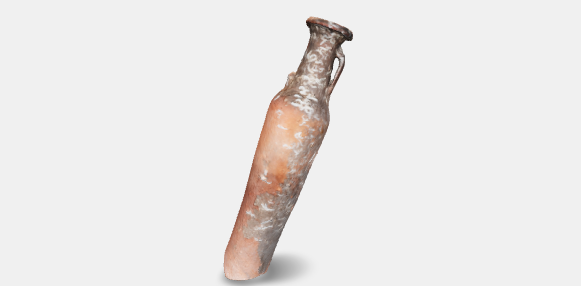Spatheion amphora (a small amphora for maritime transport of valuable liquids) of Keay XXVI type, made in North Africa. Cylindrical, narrow and elongated body, missing the foot, with rounded, everted and lowered rim. Cylindrical neck with a slight central narrowing. One handle is missing.
The amphora presents a widespread biological colonisation in the form of small tubular calcareous encrustations caused by epilithic (superficial) growth of sedentary sea worms. The distribution of biological remains indicates that the artefact remained free from sediments for some time, allowing for some biological development. The varying dimensions of specimens confirm that the colonisation was active at the time of the recovery, as many specimens were in the early stage of development.

Corrado M. 2001, Nuovi dati sul limes marittimo bizantino del Bruttium, in Archeologia Medievale 28, pp. 533-569.
Keay S. J. 1984, Late Roman amphorae in the Western Mediterranean. A typology and economic study: the Catalan evidence, Oxford, British Archaeological Reports International Series.
Medaglia S. 2008, Per un censimento dei relitti antichi lungo la costa crotonese. Nota preliminare, in Ricerche archeologiche e storiche in Calabria: modelli e prospettive, “Atti del convegno di studi in onore di Giovanni Azzimmaturo (Cosenza 2007)”, Cosenza, pp. 93-120.
Medaglia S. 2010, Carta archeologica della provincia di Crotone: paesaggi storici e insediamenti nella Calabria centro-orientale dalla Preistoria all’Altomedioevo, Ricerche IV. Collana del Dipartimento di Archeologia e Storia delle Arti, Università della Calabria, Rossano.



